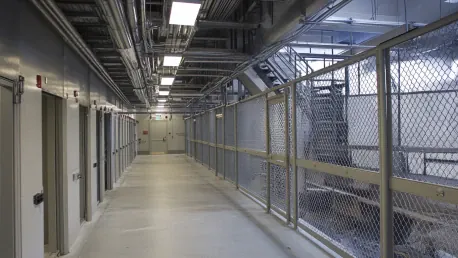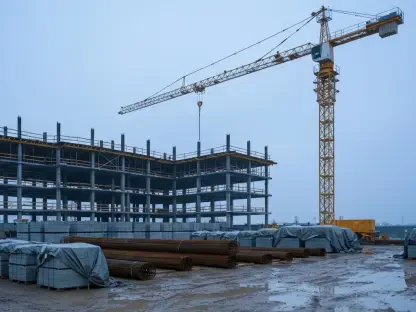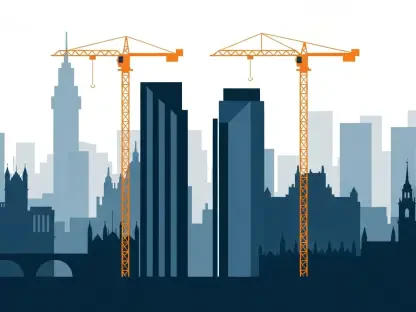In a significant development for New York City’s correctional infrastructure, Tutor Perini has announced detailed plans and provided a timeline for constructing a new jail in Manhattan. This project is crucial to the city’s initiative to replace the Riker’s Island prison complex. Set to be managed by a joint venture comprising Tutor Perini and O&G Industries, the project carries an estimated cost of $3.8 billion. The Los Angeles-based Tutor Perini will serve as the managing partner, while O&G Industries, from Torrington, Connecticut, holds a 25% stake in this extensive venture.
Detailed Project Timeline
Long-Term Infrastructure Initiative
The ambitious timeline for this significant initiative spans 2,646 calendar days, translating to roughly seven years and three months. According to Tutor Perini’s announcement, the expected final completion date for the new Manhattan jail has been set sometime in 2032. While this timeline reflects a prolonged commitment, it underscores the intricate process involved in modernizing and rebuilding such a crucial facility. This extended project duration reveals the complexities and extensive oversight required to meet the specific designs and regulatory standards for correctional institutions.
The location for this new facility will be at 124-125 White Street in Lower Manhattan’s Chinatown. This site, known for being home to the now-demolished Manhattan Detention Complex, colloquially referred to as “The Tombs,” offers a symbolic nod to the area’s history while marking the beginning of a modern correctional era. This particular geographical selection suggests a strategic decision to integrate the new jail within a historically significant part of the city, effectively blending modern infrastructure with an awareness of the site’s legacy.
Strategic Planning and Implementation
New York City’s broader initiative to replace the outdated and controversial Riker’s Island prison complex by 2027 reinforces the strategic planning and systematic approach adopted in developing this Manhattan facility. Despite skepticism surrounding the feasibility of meeting this ambitious deadline, the inclusion of multiple projects, including this critical new jail in Manhattan, emphasizes the city’s commitment to enhancing its correctional infrastructure. The New York Times has raised concerns regarding the projected closure deadline, signifying the importance of rigorous planning and continual progress monitoring.
The new Manhattan jail project is integral to a series of pivotal construction endeavors aimed at overhauling the city’s correctional system. This effort symbolizes the city’s dedication to improved living conditions for inmates and the broader intent to establish facilities equipped with modern services and security measures. The jail’s structured design will accommodate essential on-site services, programming, recreational facilities, food services, and designated staff offices. The inclusion of such comprehensive amenities ensures holistic development and integration within the broader community.
Comprehensive Facility Design
On-Site Services and Amenities
One of the paramount features of the new Manhattan jail includes its structured design, encompassing 1,040 beds dedicated to housing inmates. This significant capacity illustrates the facility’s role in effectively managing inmate populations within the city. Its design also addresses essential services by offering various on-site programming options and recreational facilities, which aim to foster rehabilitation and overall well-being for those housed within the facility. Such a focus on holistic development represents a progressive approach in the correctional system.
In addition to inmate-focused facilities, the project will include 125 below-grade parking spots, ensuring adequate infrastructure for staff and visitors. This is complemented by 20,000 square feet of community and commercial space on the ground floor, exemplifying a multifaceted approach to integrating correctional facilities within the broader urban landscape. By including community spaces, the facility aims to foster positive interactions and establish beneficial ties with the local populace, marking a shift from traditional, isolated prison environments.
Community and Architectural Partnerships
While Tutor Perini will manage the project, the involvement of architectural firm HOK as the design partner reflects a collaborative strategy in developing the facility. Such partnerships emphasize a meticulous focus on architectural standards, ensuring the design aligns with both functional and aesthetic criteria. The project’s comprehensive planning encompasses various facets, from enhancing security to integrating community-focused spaces, highlighting the multifaceted nature of this ambitious undertaking.
This collaborative effort signifies a broader trend of substantial financial investment and extended timelines attributed to large-scale urban infrastructure projects. It underscores a strategic intent to modernize correctional institutions, aligning facility renovations with principles of rehabilitation, community integration, and inmate well-being. These developments represent a pivotal step in the city’s long-term vision for its correctional system, melding advanced design with community-centric approaches.
Conclusion: A Commitment to Modernization
In a major development for New York City’s correctional system, Tutor Perini has unveiled detailed plans and a timeline for building a new jail in Manhattan. This initiative is a significant element of the city’s effort to phase out the Rikers Island prison complex. The project will be overseen by a joint venture that includes Tutor Perini and O&G Industries, with an estimated cost of $3.8 billion. Tutor Perini, based in Los Angeles, will act as the managing partner of the project. Meanwhile, O&G Industries, hailing from Torrington, Connecticut, will hold a 25% stake in this large-scale venture. The collaboration between these two firms is pivotal for the efficient execution and timely completion of the project. The new facility aims to enhance the city’s ability to manage its incarcerated population in a more modern and humane manner. This significant infrastructure project stands as a testament to New York City’s commitment to reforming its correctional facilities and improving conditions for inmates.









